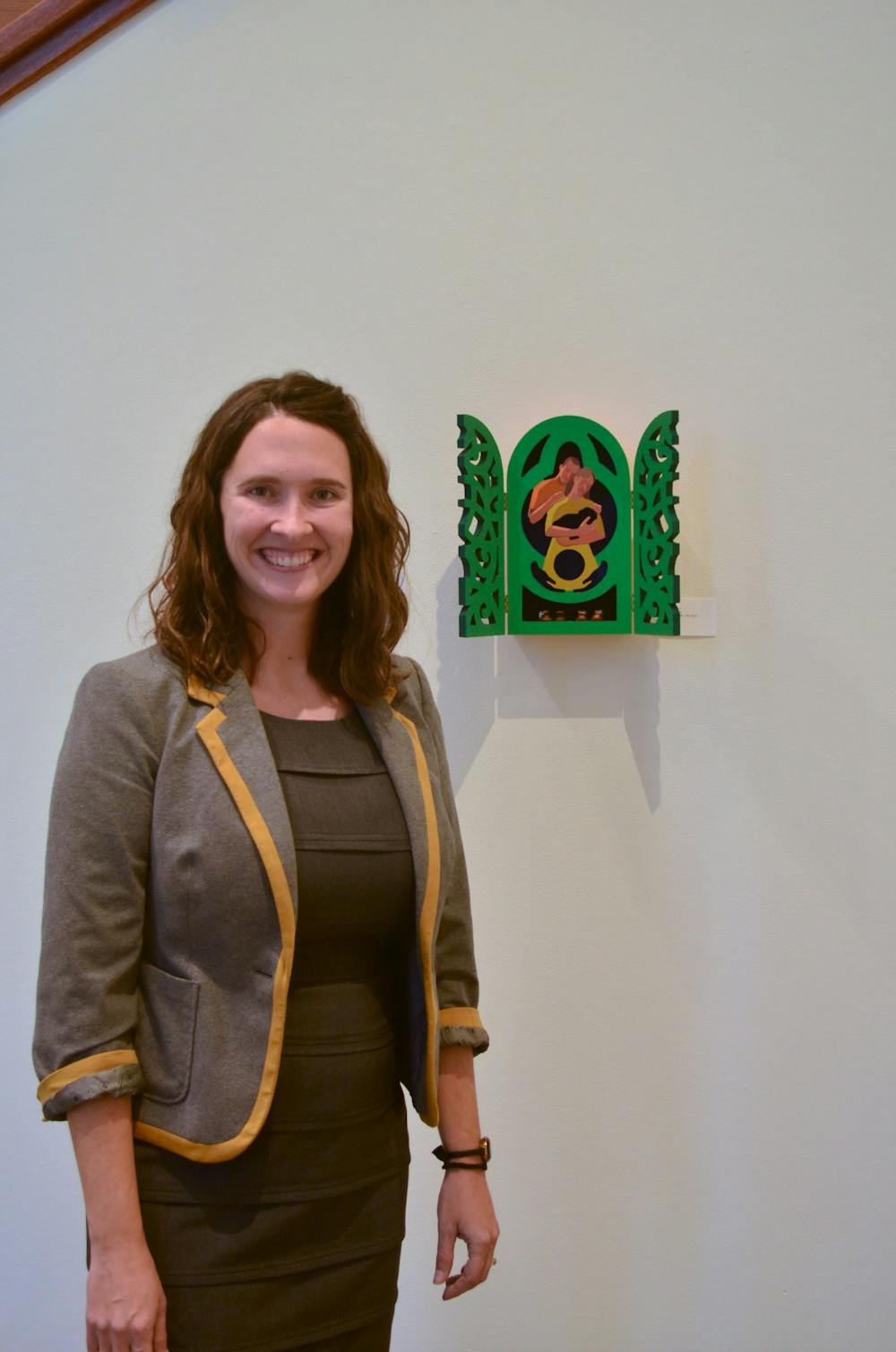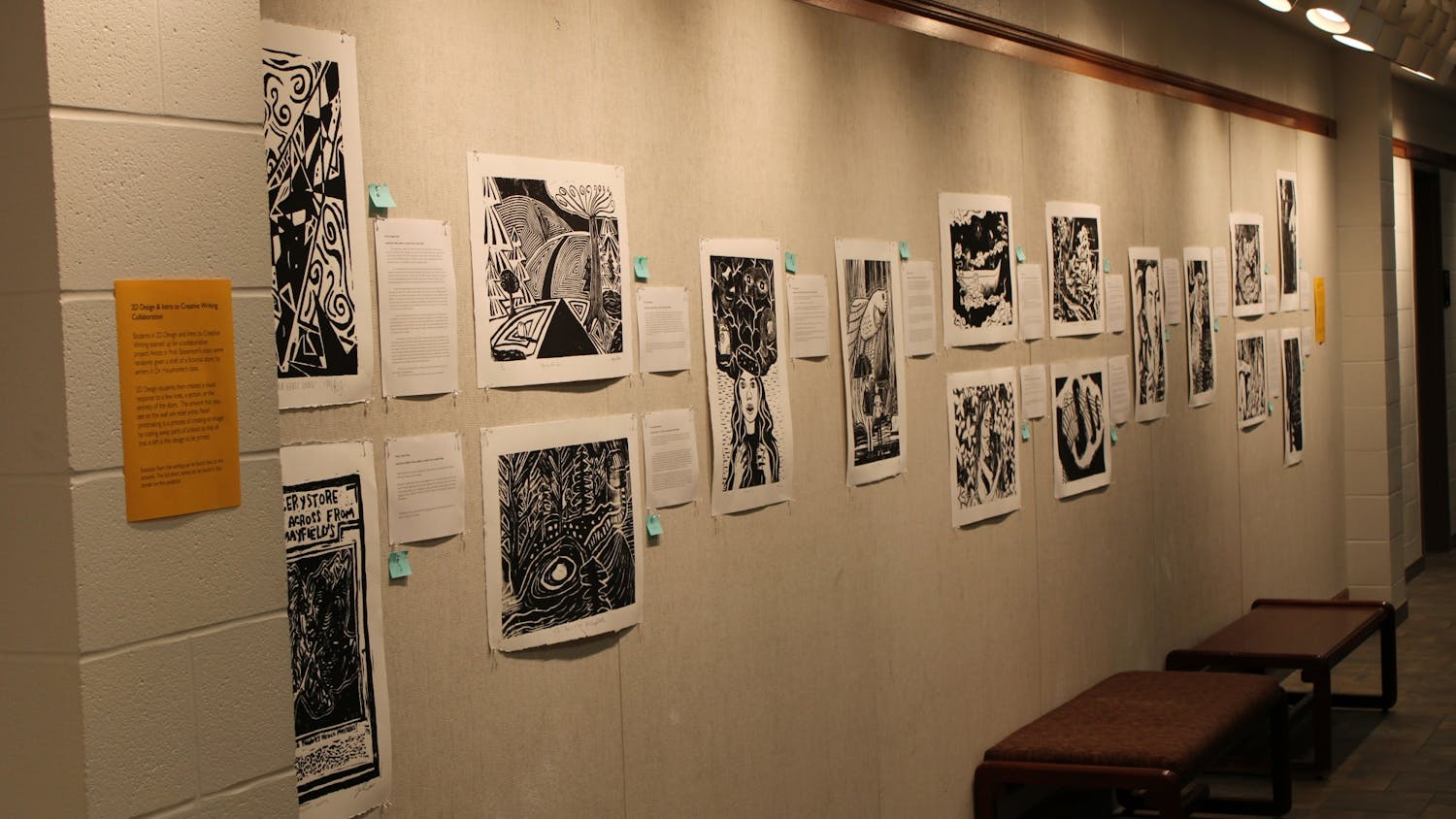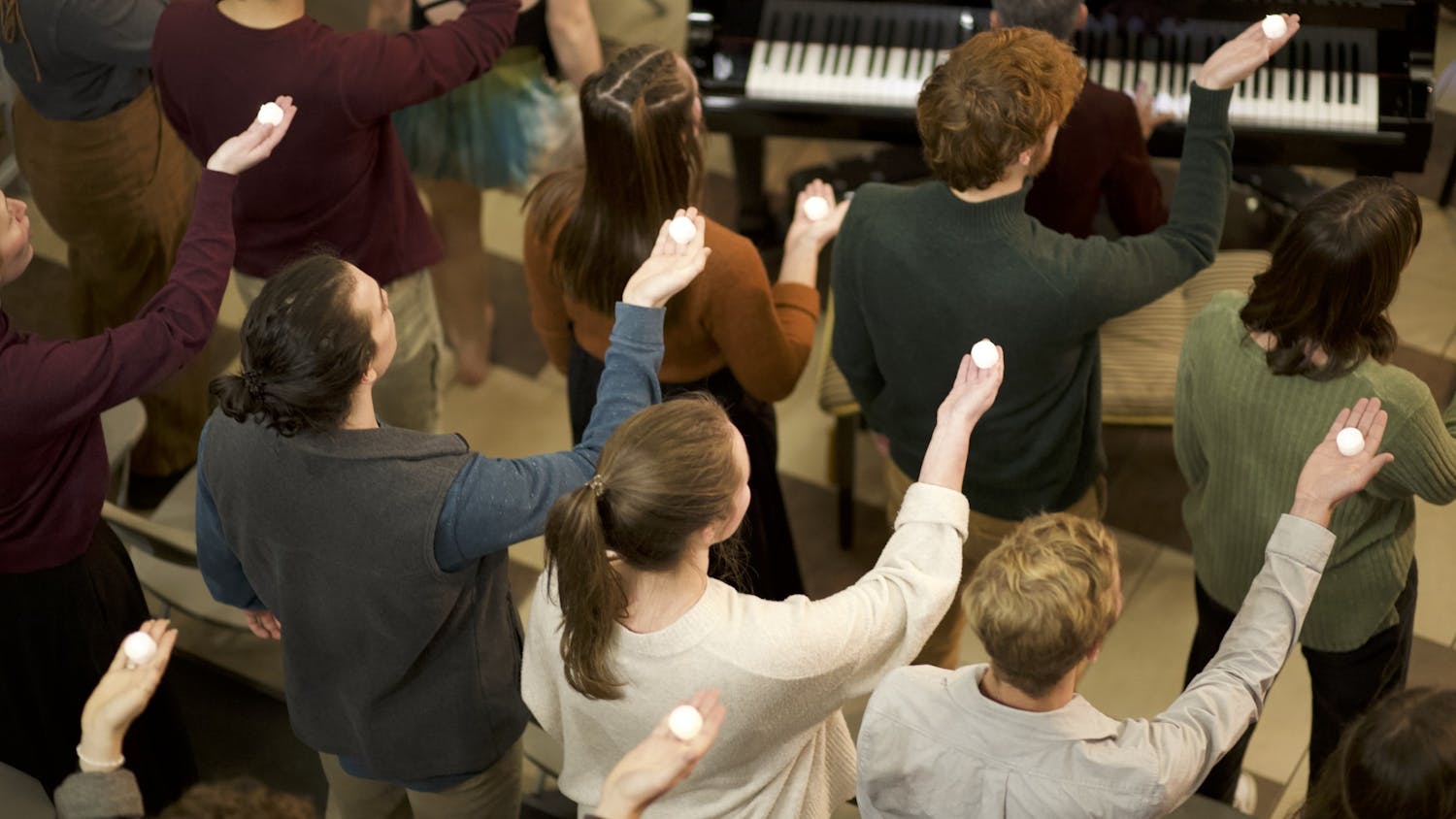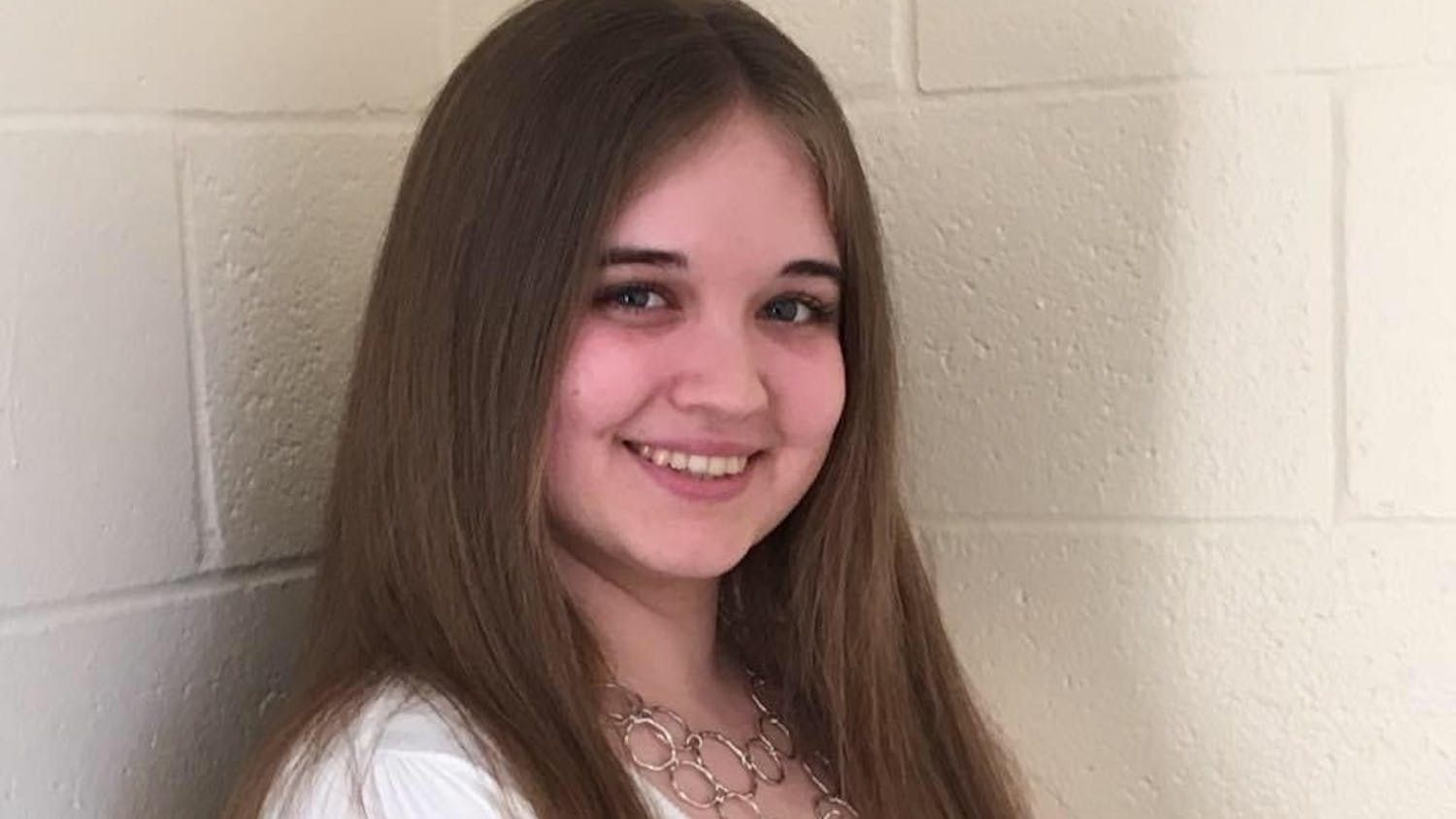Some forms of grief never truly disappear.
They leave a mark, an invisible scar, even as time moves on and the rest of the world begins to forget.
But for a mother, the loss of a pregnancy lasts forever. Miscarriages leave behind an imprint that cannot be ignored, and the silent grief that is carried in a child’s place becomes a pressure carved deep into the soul.
Yet from that pressure, from the pain and the sorrows, beauty and comfort and healing may still be found.
That is the message and power of Assistant Professor of Art Laura Stevenson’s faculty exhibit, displayed through Homecoming Week at the Metcalf Gallery of Art.
“I think that a lot of things can come out of art that are good when we’re willing to make personal connections with the things we create,” Stevenson said.
And that vulnerability has had beautiful returns. Sharing her story with both her class and with the campus at large, Stevenson’s exhibition has begun a dialogue about what has always been known as a “silent suffering.”
Often considered too personal to share or too painful to fit into words, the beauty of Stevenson’s expression is the volume with which her pieces speak.
In the silence of Metcalf, in the silence of personal loss and grieving, Stevenson hopes to convey peace and comfort, and there is perhaps no better example of this theme than her first display: “We Will Carry You.”
A representation of the Trinity holding a couple who cannot hold the child they’ve lost, the piece is a reminder of faith in tragedy. It’s a reminder of the connection between life and death, and the hope Christians find in the promise of resurrection and redemption.
It’s also a reminder of return, however. Just as Christians believe in being reunited with Christ after death, Professor Stevenson has found comfort in the idea that we will also be reunited with those we have lost — and those we never got to hold.
“We all know that we’re going to face suffering here on this earth and in a fallen world,” Stevenson said. “God uses and works to redeem aspects of that suffering through us being able to connect with others.”
At its heart, that’s what Stevenson’s exhibition is all about: connection and return.
It’s seen in the interwovenness between the lines and colors of her art. It’s seen in her language, as she refers to her pieces as a “celebration of life and tragedy of death in the womb.” And it’s seen, perhaps most clearly, in “1 in 4.”
The piece’s meaning feels unclear at first glance. A circular frame split into four sections, there are four pairs of shoes hanging reminiscent of kindergarten cubbies.
On a closer look, however, the symbolism hits, slowly. Three pairs of shoes hang from their hooks, tied up as if they have just been taken off a child’s feet.
One pair hangs from a store-bought hook. The tag is still fastened to its straps.
Where the other shoes hold wrinkles and laces loose from wear, it’s these pristine shoes that stand out against the crowd. “Child of mine,” the tag reads, the shoes hanging unused. Unworn. Waiting to be returned.
The piece also reveals the statistic for miscarriages in this country, “1 in 4” sharing the rate of pregnancy loss as silently as the grief that comes from such a journey.
“I never knew about the stats and never knew how common it was,” Stevenson said. “All of that was just kind of largely unknown to me until it started being a real experience and a reality for me.”
But it’s a very real part of many mothers’ stories nonetheless.
As Stevenson has shared her art, students across campus have related to her experience, revealing their own stories of lost siblings or family members who have dealt with similar forms of grief.
“I read this one book that said that vulnerability begets vulnerability,” she said. “And so when we’re willing to share and be vulnerable in our suffering or grief or our loss that that sometimes opens up the windows for others to share in it, whether it’s a common experience or not.”
For Stevenson, that connection has come through art. And while, for generations, miscarriage has been labeled as a silent grief, it is through our connections that we begin to see how interconnected life and loss and love truly are.
In a time where there are no words, when there is only silence, we can hold onto the love and hope that is found in Christ. We can find connection and healing — even in the silence.





